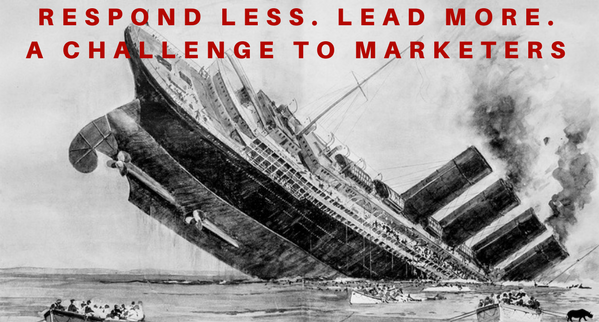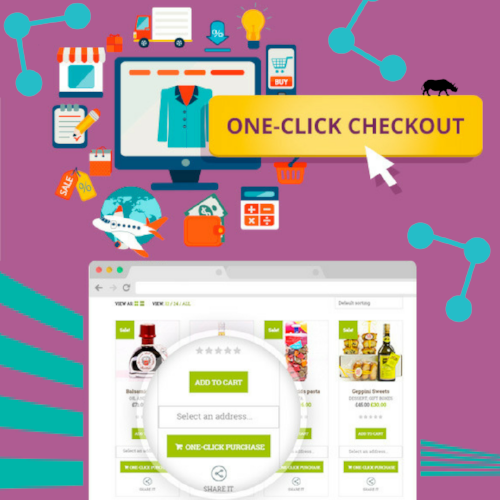As mentioned above, websites with strong repeat customers probably stand to gain the most benefit from adding this tactic into their websites, because it makes it simple for customers to complete the transaction, without thinking too much about it. Which brings me to perhaps one-click’s most powerful benefit. Does it simplify the process and please the customer? Of course it does. But what it also does, that is a little subtler, is that it psychologically circumvents (for the customer) the traditional consideration phase, which are the moments just before you click “buy” – where you might think about whether you need more detergent, dog treats, crayons, tooth paste etc.
Typically, when customers reach the payment page of the checkout process, the reality of financial spending gets very real. Psychologically it’s at this point, customers consider the amount of money leaving their wallets/accounts. How much money do I even have in that account? Can I afford this? Do I really need another pair of shoes? This payment phase in eCommerce, is the point where most of the abandonments take place, and this is a moment that impacts brick-and-mortar customers in much the same way, and its why merchants everywhere can’t wait for epayments to be universally adopted. Technological sophistication has enabled customers to entirely skip the “consideration” phase altogether in certain circumstances, and so we see more and more retailers adopting those processes wherever possible.
Going one-step further, citing another progressive Amazon strategy, in the news this year we have heard all about Amazon’s checkout-free grocery store concept – which if you haven’t heard about it – allows customers to find what they need from their store aisles (bread, milk, kale), and then exit the store by passing through terminals, which automatically charge your epayment source whether that is on your smartphone, smartwatch etc. This new speed-pass version of retail, while positioned to customers as we are pleased that we can save you time, isn’t as humanitarian-centric as it appears. Like their one-click checkout process, the sub-text is we’ve made the traditional “checkout process” disappear, so customers won’t think too much about what they are purchasing, and will likely spend more than they intended, more frequently. But I digress.
So what are we likely to see happen in the eCommerce space? My bet would be that many brands will start to add in the one-click checkout process, because its common sense. Over the years, we’ve already seen other big companies, such as Apple, start to license the technology from Amazon because they understood the value in making the purchase process as easy as possible, and couldn’t wait until now, when it would be available for free. Apple liked this technology so much in fact, that they’ve been paying Amazon licensing fees (in an undisclosed amounts) since around 2000, which is only a year or so after the patent had been awarded. So now that this will be available to anyone who can implement it, I think we will see different phrasing on these CTA (call-to-action) buttons, created around this idea of one-click checkout.
My hunch is that while brands will most likely have someone on their marketing or eCommerce teams, who is aware of this patent expiration, and championing this idea for how to improve user experience, there will likely be a BIG push from eCommerce platform providers (such as Salesforce, WebSphere, etc) to their clients - encouraging them to use their version of this new one-click buttons so that all their metrics will increase positively. This would represent a win for the vendor (who can now boast they aided their clients to higher KPIs), and a win for the client (who can make more money and please more customers).
As mentioned at the start, the customers that will use this technology the most, the ones that are likely to benefit from this most of all, are returning customers. That is, brand loyal customers who have been to your site before, perhaps completed a profile, but certainly saved their payment details for future use. In the industry, the ability to facilitate this for your customers, is sometimes referred to ecommerce-site registration – but this is essentially where customers can be offered a login, so that they can store information, such as payment details. Once these details have been stored, then upon future site-visits (sessions) – assuming they are logged in already – they can easily make use of the one-click technology. I just mention this part, because clearly there is more to consider than just adding a CTA button that reads “one-click checkout”, as you need to make sure that your website provider can accommodate this.
Lastly, the implications for desktop shopping are huge, because again, you are saving the customer time – which they appreciate. But when you think about the mobile implications this will have, well those may even be bigger. Recently, in an article on the MultiChannel Merchant blog, this is discussed at length and would make for an interesting separate post. For now, if you find any articles on “on click” being discussed, I’d invite you to share them here as comments.







